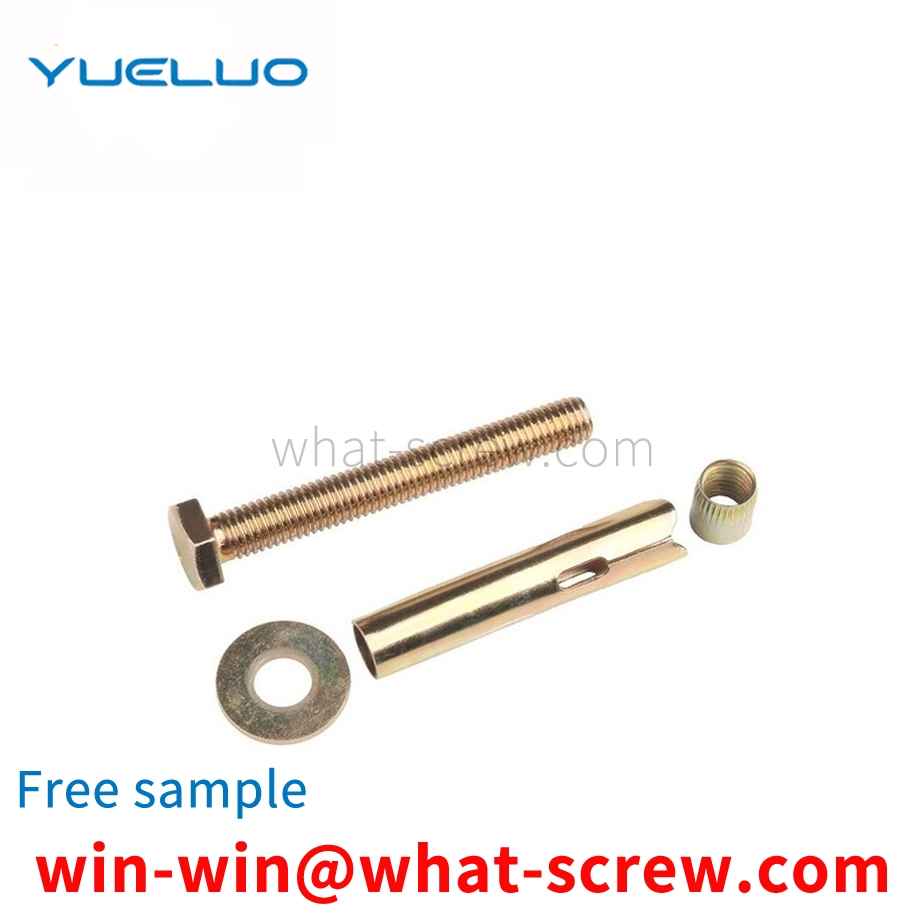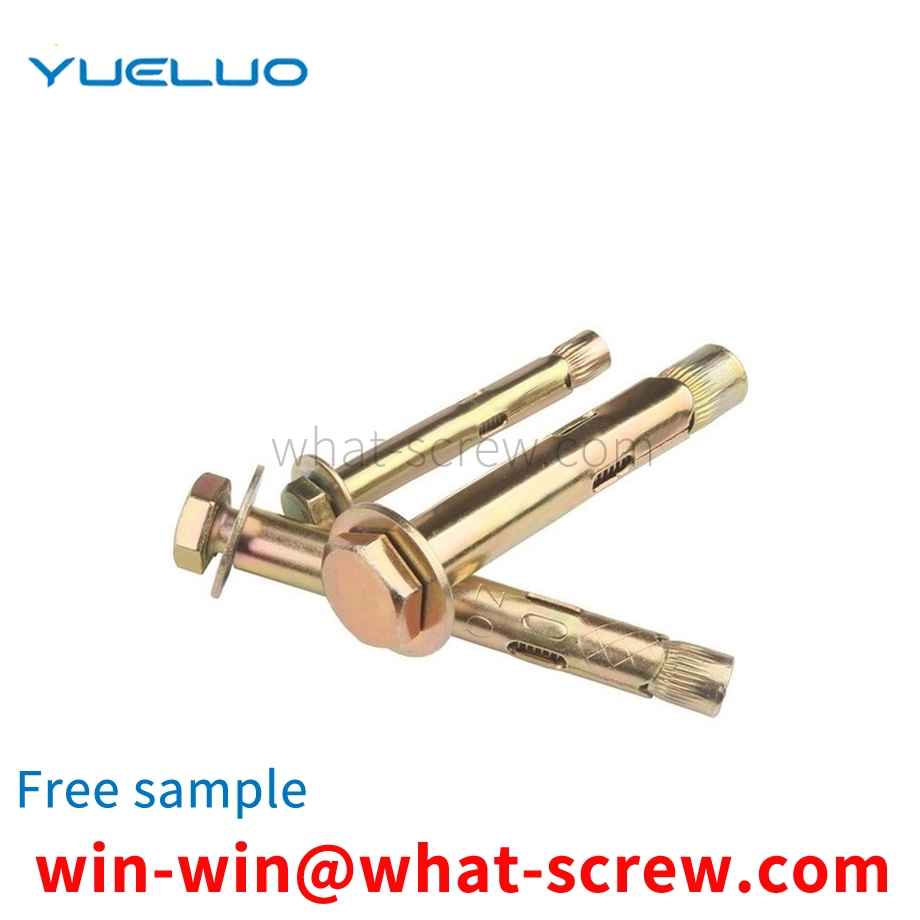Standardized mechanical parts for fastening connections. Standard fasteners mainly include bolts, studs, screws, set screws, nuts, washers and rivets. There are many structural types of bolts, and most of the heads are hexagonal. For bolts subjected to shock, vibration or variable load, in order to increase flexibility, the polished rod part is made into thin sections or hollows. The seat end of the stud is screwed into the threaded hole of the connected piece, and the nut used at the nut end is similar to the bolt nut. The structure of the screw is basically the same as that of the bolt, but the shape of the head is various to adapt to different assembly spaces, tightening degrees and connection appearances. Set screws have different head and tip shapes to accommodate different levels of tightening. Nuts are also available in a variety of styles, with hexagons being the most widely used.
The combination screw includes a head, a threaded section and a flanging section, the flanging section is arranged below the threaded section, and the flanging section and the threaded section pass through the mounting holes on the fittings, so that the combination screw and the fittings are rotatably connected, so After the flanging section passes through the fitting, the bottom of the flanging section is riveted and pressed so that the bottom of the flanging section is turned outward, so that the combined screw cannot be separated from the fitting.
The flat key transmits torque on the side, has good neutrality, is easy to assemble and disassemble, and cannot realize the axial fixation of the parts on the shaft. Ordinary flat key: Type A, Type B, Type C, Type A is used for shaft grooves machined by end mills. The key is well fixed axially in the groove, but the stress concentration caused by the groove on the shaft is large; Type B is used for disc milling cutters. The machined shaft groove, the stress concentration of the shaft is small; the C type is used for the shaft end; it is suitable for high-speed, high-precision or occasions under variable load and impact, such as fixing gears, sprockets and other rotating parts on the shaft. Guided flat key: The key is fixed on the shaft with a screw, the key and the hub groove are in dynamic fit, and the parts on the shaft can move axially. For the convenience of starting the key, there is a key-starting screw hole. Use the occasions where the axial movement of the parts on the shaft is not large, such as the slip gear in the gearbox. Feather key: The key is fixed on the axle, and the parts on the shaft can move axially with the key; it is used in the occasions where the axial movement of the parts on the shaft is large;
The embedded nut is made of copper nuts made of various embossed wires (usually lead brass, such as H59, 3604, 3602). The embedded knurled copper nuts that we come into contact with on a daily basis are processed by precision automatic lathes. The reference standard for embedded knurled copper nuts comes from the national standard GB/T809. The main operation method of the anti-loose nut is to inject the embedded knurled copper nut. After heating, it is embedded into the plastic part or directly injected into the mold. If the mold is injection-molded, the melting point of PA/NYLOY/PET is above 200°C , After the embedded nut is hot melted into the plastic part, the temperature rises rapidly. After injection molding, the plastic body rapidly cools and crystallizes and becomes hard. If the embedded nut temperature is still at a high temperature, it may fall to the place where the copper nut contacts the plastic part. Start to loosen or crack. Therefore, copper nuts are used instead of carbon steel nuts in the injection molding of embedded nuts. There are two ways to form the external knurling of the embedded copper nut. One is to use copper raw material to draw the knurl and then to produce it on the upper equipment. Generally, the pattern of this method is straight, and the other is to use The round copper material is directly embossed while tapping during the production process. This processing method can produce some non-standard size knurled copper nuts. The embossed shape of the embedded copper nut can be selected by the user, such as mesh, Character embossing, herringbone embossing and other knurling patterns.
There are two types of bolt detection: manual and machine. Manual is the most primitive and the most commonly used consistent detection method. In order to minimize the outflow of defective products, general production enterprise personnel inspect the packaged or shipped products by visual means to exclude defective products (defects include tooth damage, mixed materials, rust, etc.). [2] Another way is automatic machine inspection, mainly magnetic particle inspection. Magnetic particle inspection is to use the interaction between the leakage magnetic field at the defect of the bolt and the magnetic powder, aiming at the difference between the magnetic permeability of the bolts (such as cracks, slag inclusions, mixed materials, etc.) and the magnetic permeability of steel, these materials are discontinuous after magnetization. The magnetic field at the place will be turbulent, and a leakage magnetic field will be generated on the surface of the workpiece where part of the magnetic flux leaks, thereby attracting the magnetic powder to form the magnetic powder accumulation at the defect—magnetic traces. The accumulation of these magnetic powders is observed and explained, and the purpose of rejecting defective products has been achieved.
We have many years of experience in the production and sales of screws, nuts, flat washers, etc. The main products are: internal and external teeth with double holes for installation, titanium socket head cap bolts, storage box nuts, full-tooth screws and other products, we can provide you with suitable screws for you. Firmware Solutions.



















 Service Hotline
Service Hotline




